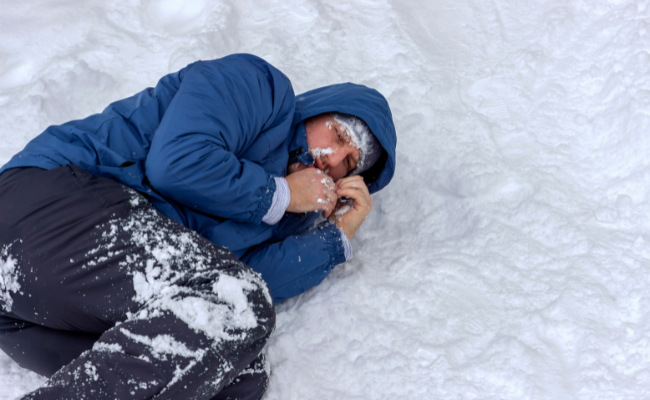How to Treat Hypothermia?
- November 20, 2023
- No Comments

What is Hypothermia?
Hypothermia, a medical emergency, occurs when the body loses heat faster than it can generate, leading to a core temperature below the normal range of 95 to 98.6 degrees Fahrenheit (35 to 37 degrees Celsius). While predominantly linked to prolonged exposure to cold, it can also be triggered by cold water immersion or wind exposure in conjunction with low temperatures. This critical medical condition compromises both brain and bodily functions when the body experiences a dangerously low temperature, with the risk of escalating to cardiac arrest and, in severe cases, death if left untreated. Recognizing and promptly addressing hypothermia is essential to avert these life-threatening consequences.
Why Does Hypothermia Occur?
- The human body maintains a delicate balance of heat production and loss to regulate its internal temperature. When exposed to cold conditions, the body responds by constricting blood vessels near the skin surface to reduce heat loss. Additionally, shivering is triggered to generate more heat through muscle activity. However, if these mechanisms are overwhelmed or if the body is unable to generate sufficient heat, hypothermia can set in.
- There are several factors that can increase the risk of hypothermia, including wet clothing, inadequate clothing for the weather, exhaustion, and certain medical conditions such as diabetes or thyroid disorders. Understanding the causes is crucial for both prevention and effective treatment.
How to Recognize Hypothermia?
Recognizing the signs and symptoms of hypothermia is essential for prompt intervention. Early stages may involve shivering, confusion, and difficulty speaking. As hypothermia progresses, symptoms can become more severe, including loss of coordination, slurred speech, and eventually unconsciousness. It's crucial to be vigilant, especially in cold environments, and watch for signs of hypothermia in oneself and others.
Treatment Solutions for Hypothermia:
- Move to a Warmer Environment: The first and most immediate step in treating hypothermia is to move the affected person to a warmer environment. This could be indoors, into a heated vehicle, or any place where exposure to cold is minimized.
- Remove Wet Clothing: Wet clothing exacerbates heat loss. Remove any wet clothing and replace it with dry, warm layers. If possible, use blankets, sleeping bags, or any available insulation to wrap the person and conserve body heat.
- Provide Warm Drinks: Offering warm, non-alcoholic beverages can help raise the internal body temperature. Avoid alcohol, as it can cause the body to lose heat more rapidly.
- Use Warm Compresses: Applying warm compresses to the core areas of the body, such as the chest, neck, and groin, can aid in restoring warmth. However, avoid direct contact with hot water or heating pads, as this can lead to burns.
- Share Body Heat: In extreme cases, sharing body heat with another person can be beneficial. Skin-to-skin contact, when appropriate, can help raise the body temperature more rapidly.
- Seek Medical Attention: Severe cases of hypothermia require immediate medical attention. Emergency medical services should be contacted to transport the person to a hospital for further evaluation and treatment.
Benefits of Prompt Hypothermia Treatment:
- Prevention of Complications: Timely intervention helps prevent the progression of hypothermia to more severe stages, reducing the risk of complications such as frostbite or organ failure.
- Preservation of Cognitive Function: Early treatment can prevent the worsening of symptoms like confusion and slurred speech, preserving cognitive function and reducing the risk of neurological damage.
- Improved Recovery: Rapid treatment contributes to a more efficient recovery process. The sooner the body temperature is restored to normal levels, the better the chances of a full recovery.
- Prevention of Long-Term Effects: Addressing hypothermia promptly minimizes the likelihood of long-term consequences, such as cold-related injuries and conditions that may persist after the immediate episode.
- Enhanced Safety in Cold Environments: Understanding how to treat hypothermia is crucial for individuals who work or engage in activities in cold environments. This knowledge enhances safety and reduces the risks associated with exposure to low temperatures.
Comments (0)